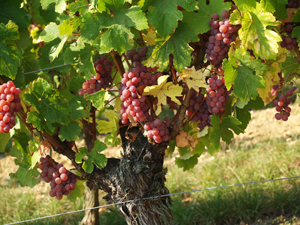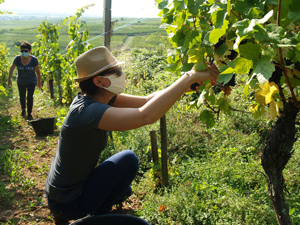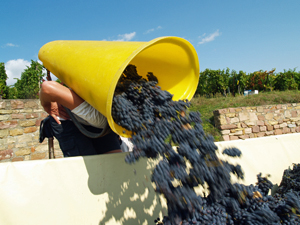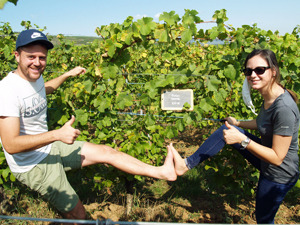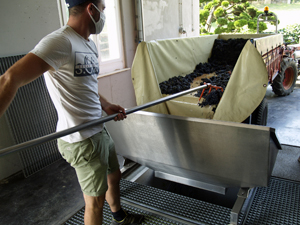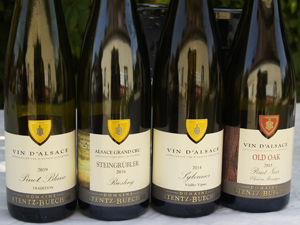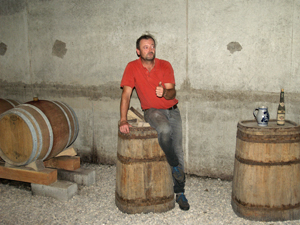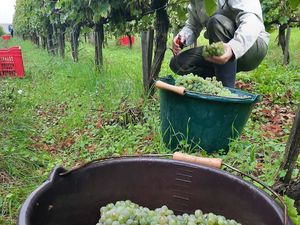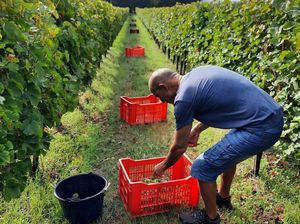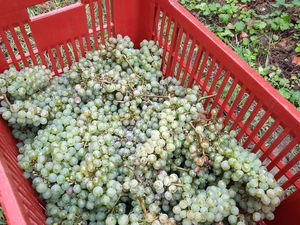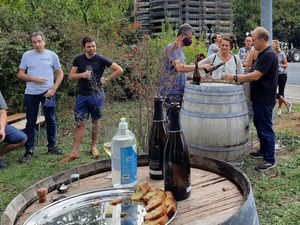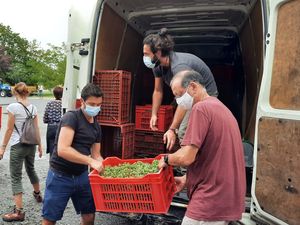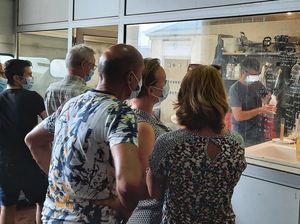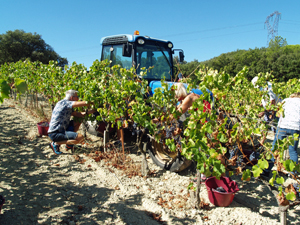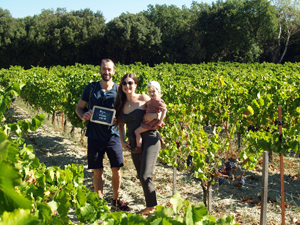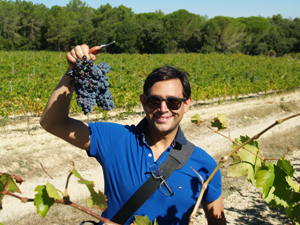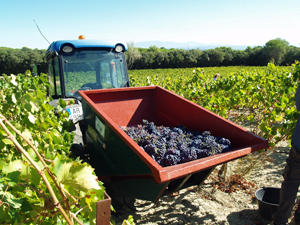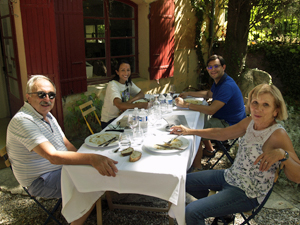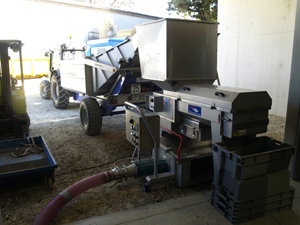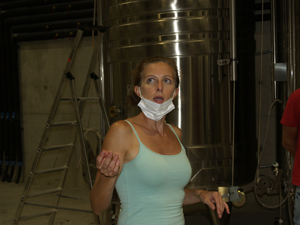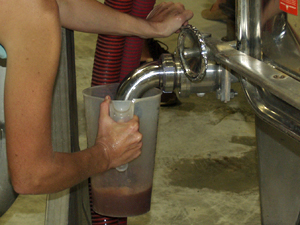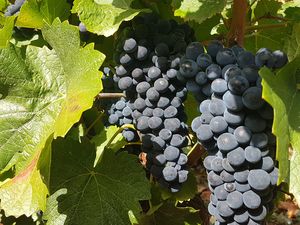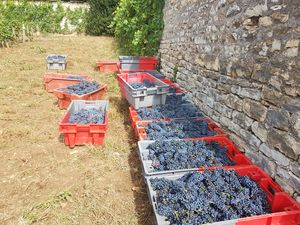The vines had a particularly warm and dry summer for the 2020 vintage in the southwest of France. The grapes reached perfect maturity and so we had a harvest of top quality grapes. We met up at Château Coutet with Mathieu, Adrien, and Alain, all members of the David-Beaulieu family who have been the owners of the winery in Saint-Emilion for 400 years. After a coffee and croissant, we got the Harvest Experience Day underway.
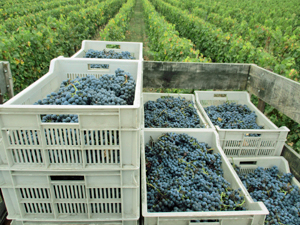
Benoît, the Gourmet Odyssey wine expert, presented the programme of the day, and reminded us of the social distancing and protective measures put in place in light of the current epidemic.
We started the day by visiting our adopted vines which are located on the limestone plateau above Saint-Emilion, where the winery’s best plots are to be found, surrounded by the most prestigious of Saint Emilion’s Grand Cru Classé vineyards.
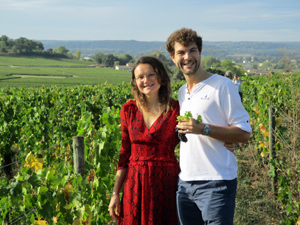
We each took some souvenir photographs of this magnificent setting, and some entered some pictures for the “My Vine” competition to reward the most original photo of their vines.
Walking through the vineyards gave us a good warm up before starting the harvest of the grapes. After the safety reminder that we make better wine with grapes rather than finger tips, the sound of the secateurs snipping away resonated throughout the vineyard.
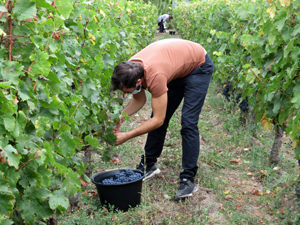
We put the bunches of grapes into a bucket which we then emptied into a crate which was carried to the awaiting tractor by some porters. The grapes were in perfect condition, the first and most important indicator of a good potential vintage to come.
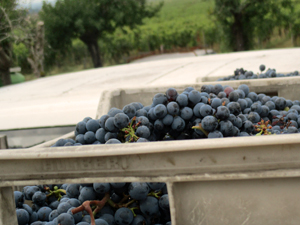
After our morning’s hard work, we returned to the lawn in front of the chateau for the aperitif, tasting the Clairet wine, which is either a very light red wine, or a strong rosé wine depending on your viewpoint. During the vinification stage, the grape juice only remains in contact with the skins for a short time to extract less colour than for a red wine, giving the wine its light and fruity character. It’s a very refreshing drink.
We then sat down to a delicious lunch prepared onsite by the caterer and accompanied by some other wines from Château Coutet. The first wine was the 2017 Château Belles-Cimes made from the young vines which has a delicate tannic structure and paired perfectly with the winemaker’s salad. We went up a grade with the 2017 Château Coutet Grand Cru, the winery’s signature wine. Made using the grapes from the estate’s three different types of terroir and the four grape varietals, Merlot, Cabernet Franc, Malbec and Cabernet Sauvignon, this wine is more powerful with a longer finish, making it a great match for the guinea-fowl farcie with morille and foie-gras sauce.
We discovered an exceptional Saint-Emilion wine with the 2017 Desmosielles, a limited edition wine made using the best vine plots that are worked by horse, without the intervention of the tractor and electricity. It’s a real treat to taste this wine that has such depth and voluptuous soft tannins on the palate. We finished the wonderful meal with a cheese platter and chocolate praline dessert.
In the afternoon we turned our attention to the work in the cellar to de-stem and sort the grapes. We separate the grapes form the stalks and take away any grapes that aren’t ripe enough, which weren’t very many this year.
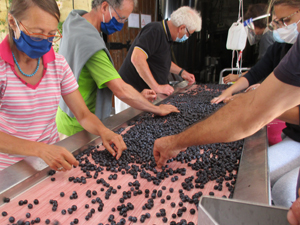
We ended the day with a visit of the cellar to learn about the first stage of fermentation. We’ll learn more about what happens next during the Vinification Experience Days.
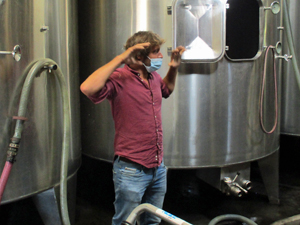
Many thanks to the David-Beaulieu family for welcoming us so warmly during the harvest which is a particularly busy and stressful time for the winemakers.



